Solution Manual for McGraw-Hill’s Taxation of Individuals and Business Entities, 2016 Edition, 7th Edition
$35.00
Solution Manual for McGraw-Hill’s Taxation of Individuals and Business Entities, 2016 Edition, 7th Edition
All resources are in electronic format and can be downloaded from your account or email – How to Download. Payments will be processed instantly after checkout. Please note that all sales are final and non refundable. If you still have questions, find answers on our FAQ page or just send us an email at [email protected], we will respond as soon as possible.
Chapter 2
Tax Compliance, the IRS, and Tax Authorities
SOLUTIONS MANUAL
Discussion Questions
(1) [LO1] Name three factors that determine whether a taxpayer is required to file a tax return.
Filing status (e.g., single, married filing joint, etc.), age, and the taxpayer’s gross income.
(2) [LO1] Benita is concerned that she will not be able to complete her tax return by April 15. Can she request an extension to file her return? By what date must she do so? Assuming she requests an extension, what is the latest date that she could file her return this year without penalty?
Benita can file an automatic six month extension to file her tax return. This extension must be filed by April 15th. October 15th is the latest date she can file her return without penalty. If October 15th falls on a Saturday, Sunday, or holiday, the extended due date will be the 1st day after October 15th that is not a Saturday, Sunday, or holiday.
(3) [LO1] Agua Linda, Inc., is a calendar-year corporation. What is the original due date for the corporate tax return? What happens if the original due date falls on a Saturday?
The original due date for Agua Linda, Inc.’s corporate tax return is March 15th. If the 15th falls on a Saturday, Sunday, or holiday, the due date will be the 1st day after March 15th that is not a Saturday, Sunday, or holiday. In this example, Agua Linda, Inc.’s due date is March 17th (i.e., the Monday after Saturday the 15th).
(4) [LO2] Approximately what percentage of tax returns does the IRS audit? What are the implications of this number for the IRS’s strategy in selecting returns for audit?
Currently, less than 2 percent of all tax returns are audited. The IRS must be strategic in selecting returns for audit in an effort to promote the highest level of voluntary taxpayer compliance.
(5) [LO2] Explain the difference between the DIF system and the National Research Program. How do they relate to each other?
The DIF system is basically a scoring system that assigns a score to each tax return that represents the probability that the tax liability on the return has been underreported (i.e., a higher score, a higher likelihood of underreporting). The IRS derives the weights assigned to specific tax return attributes from historical IRS audit adjustment data from the National Research Program (NRP).
The NRP analyzes randomly selected returns to ensure that the DIF scorings are representative of the population of tax returns. The DIF system then uses these (undisclosed) weights to score each tax return based on the tax return’s characteristics. Returns with higher DIF scores are then reviewed to determine if an audit is the best course of action.
(6) [LO2] Describe the differences between the three types of audits in terms of their scope and taxpayer type.
The three types of IRS audits consist of correspondence, office, and field examinations. Correspondence examinations are the most common. These audits (as the name suggests) are conducted by mail and generally are limited to one or two items on the taxpayer’s return. Among the three types of audits, correspondence audits are generally the most narrow in scope and least complex.
Office examinations are the second most common audit. As the name suggests, the IRS conducts these audits at the local IRS office. These audits are typically broader in scope and more complex than correspondence examinations. Small businesses, taxpayers operating sole proprietorships, and middle to high-income individual taxpayers are likely candidates for office examinations. In these examinations, the taxpayer receives a notice that identifies the items subject to audit, requests substantiation for these items as necessary, and notifies the taxpayer of the date, time, and location of the exam. Taxpayers may attend the examination alone, or simply let their tax adviser or attorney attend on the taxpayer’s behalf.
Field examinations are the least common audit. The IRS conducts these audits at the taxpayer’s office (i.e., place of business), or the location where the taxpayer’s books, records and source documents are maintained. Field examinations are generally the broadest in scope and most complex of the three audit types. They can last many months to multiple years and generally are limited to business returns and the most complex individual returns.
(7) [LO2] Simon just received a 30-day letter from the IRS indicating a proposed assessment. Does he have to pay the additional tax? What are his options?
Simon does not have to pay the additional tax at this time. The 30-day letter instructs the taxpayer that he or she has 30 days (1) to request a conference with an appeals officer, who is independent (resides in a separate IRS division) from the examining agent or (2) to agree to the proposed adjustment. If the taxpayer chooses to go to the appeals conference and reaches an agreement with the IRS at the appeals conference, the taxpayer can then sign the Form 870. If the taxpayer and IRS do not agree on the proposed adjustment at the appeals conference, or the taxpayer chooses not to request an appeals conference, the IRS will then send the taxpayer a 90-day letter (statutory notice of deficiency).
(8) [LO2] Compare and contrast the three trial-level courts.
The U.S. District Court is the only court that provides for a jury trial; the U.S. Tax Court is the only court that allows tax cases to be heard before the taxpayer pays the disputed liability and the only court with a small claims division (hearing claims involving disputed liabilities of $50,000 or less); the U.S. Tax Court judges are tax experts, whereas the U.S. District Court and U.S. Court of Federal Claims judges are generalists. Both the U.S. Tax Court and local U.S. District Court cases appeal to the specific circuit court based on the taxpayer’s residence. In contrast, all U.S. Court of Federal Claims cases appeal to the U.S. Circuit Court of Appeals for the Federal Circuit.
(9) [LO3] Compare and contrast the three types of tax law sources and give examples of each.
The three types of tax law sources include statutory authority issued by Congress (e.g., the Internal Revenue Code, committee reports), judicial authority (i.e., rulings by the U.S. District Court, U.S. Tax Court, U.S. Court of Federal Claims, U.S. Circuit Court of Appeals, or U.S. Supreme Court), and administrative authority (e.g., regulations, revenue rulings, and revenue procedures). In addition to being issued by different groups, the format and purposes of each of these authorities are different. Whereas statutory authorities are tax laws enacted by Congress, judicial and administrative authorities generally interpret enacted tax laws.
(10) [LO3] The U.S. Constitution is the highest tax authority but provides very little in the way of tax laws. What are the next highest tax authorities beneath the U.S. Constitution?
The Internal Revenue Code of 1986 and Supreme Court decisions represent the highest tax authority beneath the U.S. Constitution. However, the Supreme Court does not establish law, but instead, simply interprets and applies the Code (and other authorities).
(11) [LO3] Jackie has just opened her copy of the Code for the first time. She looks at the table of contents and wonders why it is organized the way it is. She questions whether it makes sense to try and understand the Code’s organization. What are some reasons why understanding the organization of the Internal Revenue Code may prove useful?
One must understand the organization of a code section (i.e., into subsections, paragraphs, subparagraphs, and clauses) to be able to cite the respective law correctly (e.g., IRC Sec. 162(b)(2)). Many provisions in the Code apply only to specific parts of the Code. If one does not understand what laws are encompassed in the chapter, it would be very difficult to interpret the code section and determine its applicability to a research question. Finally, the Code has been arranged such that, in general, similar code sections are grouped together. Understanding this organization allows the researcher to be much more efficient in locating relevant code sections.
(12) [LO3] Laura Li, a U.S. resident, works for three months this summer in Hong Kong. What type of tax authority may be especially useful in determining the tax consequences of her foreign income?
The tax treaty between the U.S. and Hong Kong.
(13) [LO3] What are the basic differences between regulations, revenue rulings, and private letter rulings?
Regulations are the Treasury Department’s official interpretation of the Internal Revenue Code and have the highest authoritative weight among regulations, revenue rulings, and private letter rulings. Regulations are issued in three different forms: proposed, temporary, and final. In addition to being issued in three different forms, regulations also serve three basic purposes: interpretative, procedural, and legislative. Unlike regulations, revenue rulings address the specific application of the Code and regulations to a specific factual situation. Thus, while revenue rulings have less authoritative weight, they provide a much more detailed interpretation of the Code as it applies to a specific transaction and fact pattern. Letter rulings are less authoritative but more specific than revenue rulings and regulations. Letter rulings generally may not be used as precedent by taxpayers. However, they may be cited as authority to avoid the substantial understatement of tax penalty under IRC Sec. 6662 imposed on taxpayers and related tax practitioner penalty under IRC Sec. 6694. Private letter rulings represent the IRS’s application of the Code and other tax authorities to a specific transaction and taxpayer. Private letter rulings are issued in response to a taxpayer request and are common for proposed transactions with potentially large tax implications.
(14) [LO3] Under what circumstances would the IRS issue an acquiescence? A nonacquiescence? An action on decision?
Except for Supreme Court cases, whenever the IRS loses, it may issue an acquiescence or nonacquiescence as guidance for how the IRS intends to respond to the loss. Although an acquiescence indicates that the IRS has decided to “follow” the court’s adverse ruling in the future, it does not mean that the IRS agrees with the court’s ruling. Instead, it simply means that the IRS will no longer litigate this issue. A nonacquiescence has the exact opposite implications. A nonacquiescence alerts taxpayers that the IRS plans to continue to litigate this issue. Finally, the IRS also issues actions on decisions, which explain the background reasoning behind an IRS acquiescence or nonacquiescence.
(15) [LO3] Carlos has located a regulation that appears to answer his tax research question. He is concerned because the regulation is a temporary regulation. Evaluate the authoritative weight of this type of regulation. Should he feel more or less confident in his answer if the regulation was a proposed regulation?
Temporary regulations, as the name suggests, have a limited life (three years for regulations issued after November 20, 1988). Nonetheless, during their “life,” they carry the same authoritative weight as final regulations. Thus, Carlos should be confident in his answer. Proposed regulations are, as the name suggests, “proposed,” and thus do not carry the same authoritative weight as temporary or final regulations. Carlos should feel less confident in his answer if it was based on a proposed regulation.
(16) [LO3] Tyrone recently read a regulation that Congress specifically requested the IRS to issue. What type of regulation is this? How does this regulation’s authoritative weight compare to other regulations?
Legislative regulation. Legislative regulations are more rare and are issued when Congress specifically directs the Treasury Department to issue regulations to address an issue in an area of law. In these instances, the Treasury is actually writing the law instead of interpreting the Code. Because legislative regulations actually represent the tax law instead of an interpretation, legislative regulations generally have been viewed to have more authoritative weight than interpretative and procedural regulations. However, in Mayo Foundation for Medical Education & Research v. U.S., 131 S.Ct. 704 (2011), the Supreme Court held (subject to specific conditions) that all Treasury regulations warrant deference.
(17) [LO3] In researching a tax question, you find only one authority (a trial-level court opinion) that is directly on point. Which court would you least prefer to have heard this case and why?
The U.S. District Court because these decisions are often considered less authoritative and are likely rendered by a district court outside of the taxpayer’s jurisdiction (versus the U.S. Tax Court or U.S. Court of Federal Claims which have jurisdiction over all taxpayers regardless of their residence). U.S. District Court decisions are often considered to have the lowest authoritative weight because the U.S. District Court hears a much broader spectrum of issues compared to the U.S. Tax Court or U.S. Court of Federal Claims. Thus, U.S. District Court judges are considered generalists relative to U.S. Tax Court or U.S. Court of Federal Claims judges.
(18) [LO3] What is stare decisis and how does it relate to the Golsen rule?
Stare decisis means that a court will rule consistently with (a) its previous rulings (i.e., unless they decide to overrule the decision) and (b) the rulings of higher courts with appellate jurisdiction (i.e., the courts their cases are appealed to). The doctrine of stare decisis presents a special problem for the tax court because it appeals to different circuits based on the taxpayer’s residence. To implement the doctrine of stare decisis, the tax court applies the Golsen rule. The Golsen rule simply means that the tax court will abide by the circuit court’s rulings that has appellate jurisdiction for a case. The implication of the Golsen rule is that the tax court may issue conflicting opinions in different circuits.
(19) [LO4] Mason was shocked to learn that the current Code is the Internal Revenue Code of 1986. He thought that U.S. tax laws change more frequently. What is wrong with Mason’s perception?
Congress enacts tax legislation virtually every year that changes the Code. 1986 is simply the last major overhaul of the Internal Revenue Code. All enacted changes are incorporated into the Internal Revenue Code of 1986.
(20) [LO4] Describe in general the process by which new tax legislation is enacted.
As required by the US Constitution (Article 1, Section 7), “All bills for raising revenue shall originate in the House of Representatives.” The Senate may propose tax legislation, but the first to formally consider a bill will be the House, typically within its Ways and Means Committee. After the committee debates the proposed legislation and drafts a bill, the bill is sent to the House of Representatives for debate and ultimately a vote (either yea or nay without modification). If the bill is approved, it becomes an act and is sent to the Senate, which refers the act to the Senate Finance Committee. Not to be outdone by the House, the Senate Finance Committee typically amends the act during its deliberations. After the revised act passes the Senate Finance Committee, the act is sent to the Senate for debate and vote. Unlike the process in the House of Representatives, senators may modify the proposed legislation during their debate.
If the Senate passes the act, both the House and Senate versions of the legislation are sent to the Joint Conference Committee, which consists of members of the House Ways and Means Committee and the Senate Finance Committee. During the Joint Conference Committee deliberations, committee members debate the two versions of the proposed legislation. Possible outcomes for any specific provision in the proposed legislation include adoption of the Senate version, House version, or some compromise version of the two acts. Likewise, it is possible that the Joint Conference Committee will simply choose to eliminate specific provisions from the proposed legislation or fail to reach a compromise on the proposed legislation, thereby terminating the legislation. After the Joint Conference Committee approves the act, the revised legislation is sent to the House and Senate for vote. If approved by both the House and Senate, the act is sent to the president for his or her signature. If the president signs the act, it becomes law and is incorporated into the Internal Revenue Code of 1986 (i.e., Title 26 of the U.S. Code, which contains all codified laws of the US). If the president vetoes the legislation, Congress may override the veto with a two-thirds positive vote in both the House of Representatives and Senate.
(21) [LO4] What are the three committees that debate proposed tax legislation? What documents do these committees generate, and how might they be used?
The House Ways and Means Committee, Senate Finance Committee, and Joint Conference Committee each produce a committee report that explains the current tax law, proposed change in the law, and justification for the change. These committee reports are considered “statutory” sources of the tax law and may be very useful in interpreting tax law changes and understanding Congressional intent. This is especially important after new legislation has been enacted because, with the exception of the Code, there will be very little authority interpreting the new law (i.e., no judicial or administrative authorities because of the time it takes for the new law to be litigated or for the IRS to issue interpretative guidance – e.g., regulations, etc.).
(22) [LO4] The president recently vetoed a tax act passed by the House and Senate. Is the tax act dead? If not, what will it take for the act to be passed?
Congress may override the presidential veto with a two-thirds positive vote in the House of Representatives and Senate.
(23) [LO5] What are the five basic parts of an internal research memo?
The memo has five basic parts: (1) facts, (2) issues, (3) authority list, (4) conclusion, and (5) analysis.
Be the first to review “Solution Manual for McGraw-Hill’s Taxation of Individuals and Business Entities, 2016 Edition, 7th Edition” Cancel reply
Related products
Solution Manual

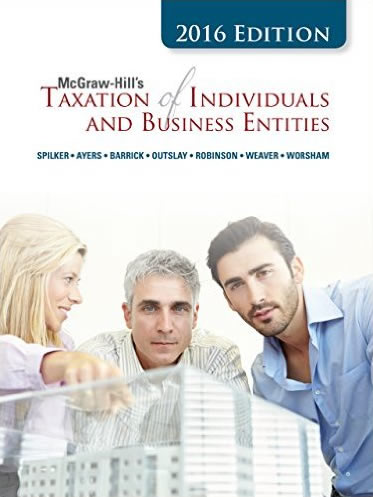
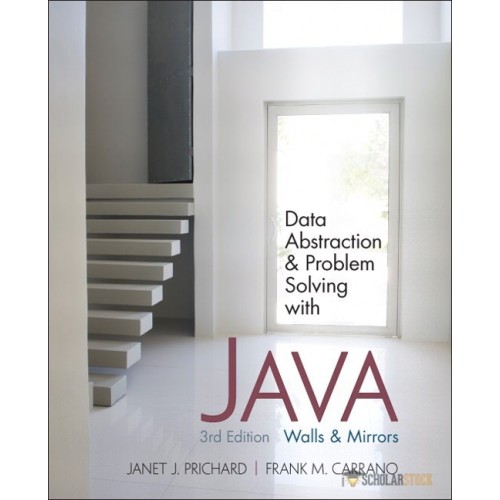

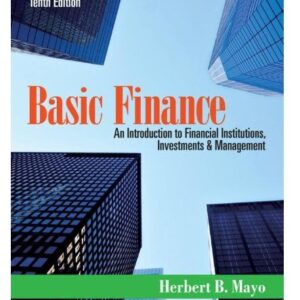

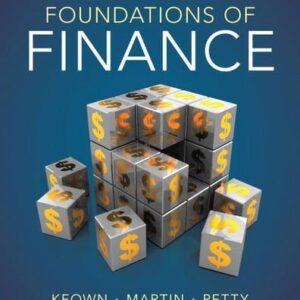
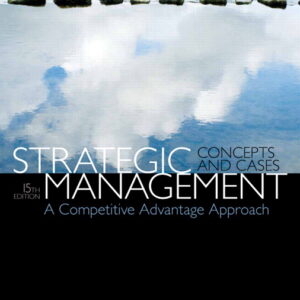
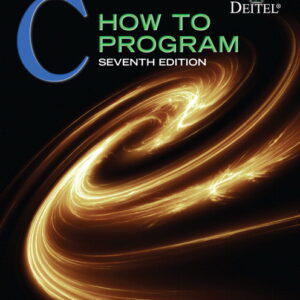
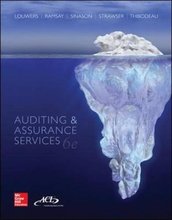
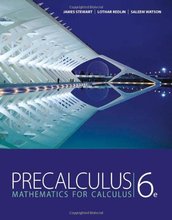
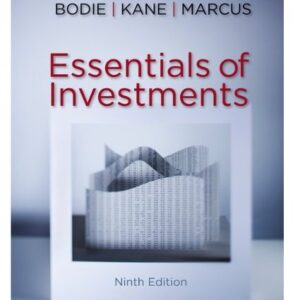
Reviews
There are no reviews yet.